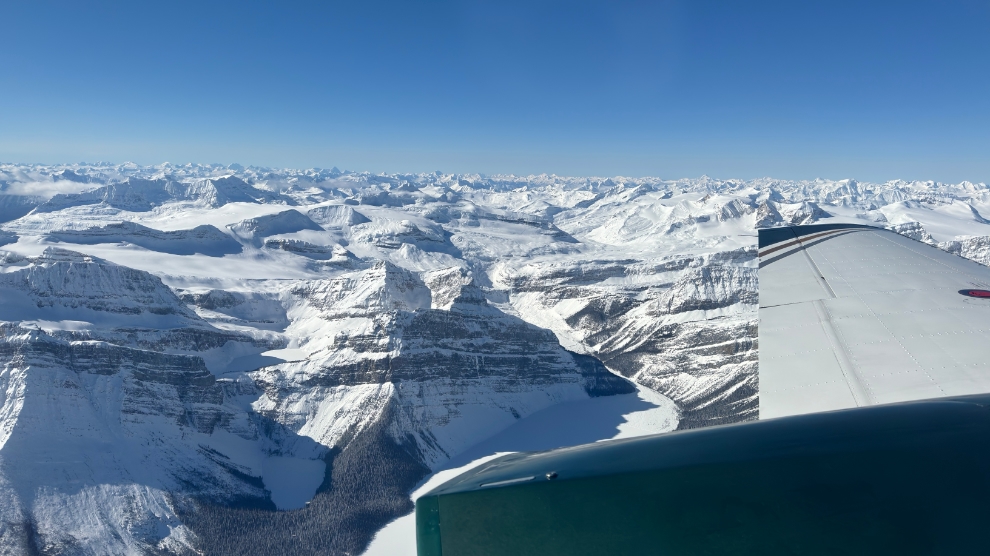Lidar (Light Detection and Ranging) has been used successfully to map the depth of the snowpack on the eastern slopes of Alberta’s Rocky Mountains. The existence of such data makes it possible to accurately assess the amount of available water in the snowpack. Such data is vital for determining how much water will filter downhill after the snowpack melts.
The measurements were taken by Teledyne Geospatial. Using a Teledyne Optech Galaxy T2000 lidar system mounted in a Piper Navajo aircraft, the surveyors were able to map 250 km² of mountainside in just one hour. The hundreds of millions of individual airborne lidar measurements were then compiled into a high-fidelity 3D model of the mountain slopes. In contrast, the manual method of walking around and sticking a measuring stick into the snowpack would have only captured a handful of points and covered no more than 3 km² in the same time period. The research project was led by University of Lethbridge principal investigator Dr. Chris Hopkinson, and sponsored by the Government of Alberta.

“Our technology is able to get a 3D map or model of what the terrain looks like,” explained Malek Singer, Teledyne Geospatial’s Airborne Product Manager. “To do this, we first fly the mountains in their bare form, without any snow prior to the winter season. That gives us a good baseline, a very high resolution model of what the terrain looks like. Then we go fly again at peak snow, say something around April or March, prior to snow melt. And the difference between these two models, i.e. the bottom of the ground and the top of the snowpack.”
Using this data, Dr. Hopkinson’s team determined that the average depth of snow on the Eastern Slopes “was around two and a half metres in most parts, in the watersheds in the slopes of the mountains.” Singer told SpaceQ. “In terms of the snow/water equivalent, I believe the average was around 20 centimetres; i.e. there’s 20 centimetres of water sitting on that mountain terrain.”
As for the importance of the lidar measurements? Beyond providing an accurate picture of the water resources in this part of Alberta this year, the data is a wakeup call to government officials. “I believe those numbers are somewhat alarming to decision makers and people monitoring these resources because they’re probably below the historic average for snow/water equivalent,” said Singer.
This being said, it was not Teledyne Geospatial’s job to fix Alberta’s water problem, just to provide accurate data about it to the study team. On this point, Dr. Hopkinson was impressed.
“Airborne lidar has proved to be a viable method of snowpack depth mapping, sampling and unit imputation over forested and mountain environments,” he said in a news release. “Lidar data, when processed with terrain information, land cover data and satellite imagery, allows for continuous snow depth imputations. This is crucial for calculating sub-basin-scale snow water equivalent (SWE), which informs water availability and directs management strategies, particularly in the emerging drought situation in Alberta this year.”




